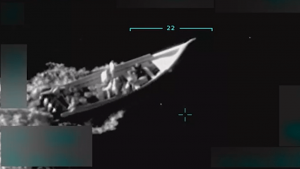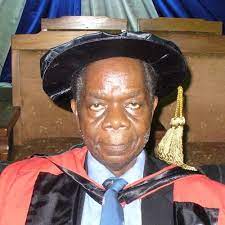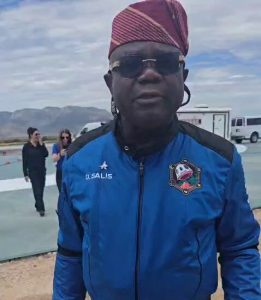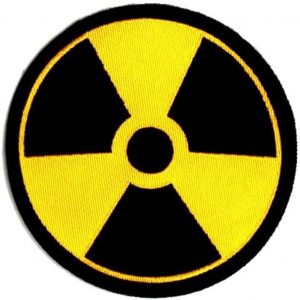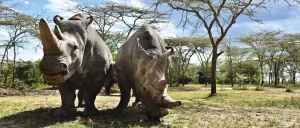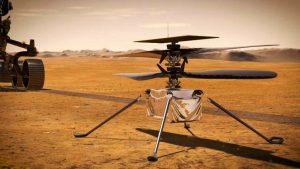Radiation is energy from any source travelling through space or some material. It can be in the form of light, heat or sound.
It can also be in the form of radioactivity or emissions from unstable atoms giving-off some excess energy or mass, or both, in an attempt to reach stability. Such emissions are radiation and can be:
Electromagnetic waves like Cosmic rays, X-rays, or Gamma rays which are similar to X-rays but have higher energy; or
Particulate like Alpha and Beta radiation.
Radiation is said to be Ionizing (radiation) when it produces ions or charged particles in the atoms making-up what it comes in contact with. Ionizing radiation is therefore, radiation that ionizes atoms.
It has great significance in health because when the atoms making-up the body are ionized, they become charged, or unstable electrically, and react differently, with great implications.
Ionizing radiation can result in radiation burns, mutation or genetic changes, foetal malformation, still births, increase in cancer cases (especially thyroid cancer) and death.
The characteristic decay period of a radioactive substance is long and is referred to as Half-life – for the element, Thorium-232, it is 14 billion years.
The need for the strict regulation of the use of ionizing radiation-emitting substances and their safety can therefore, not be over-emphasized.
There are many sources emitting ionizing radiation in use in Nigeria. Some of them are in oil prospecting at depths of up to 10,000 feet.
They sometimes get lost in operations, posing serious environmental hazards and poisoning underground water. Fishing, or the process of retrieving them, is very difficult.
Other uses of ionizing radiation in Nigeria are in gauging devices in bottling companies to ensure precision so that the level of liquids in bottles is uniform and not over or under-dispensed.
In metallurgy, sources emitting ionizing radiation are also used in checking the integrity of welded steel. This is particularly useful for oil pipelines, especially those offshore and difficult to reach, to avoid leaks and environmental pollution.
Diagnostic machines like X-ray and scanning machines use low doses of radiation to make tissues and organs visible without opening up the patient.
In nuclear medicine centres like the University of Ibadan Teaching Hospital, the so-called radiopharmaceuticals are commonly used with imaging techniques in diagnosis and treatment.
Goitre, swelling of the thyroid glands in the neck, is an iodine-deficiency disease. Mildly radioactive iodine can be administered to the patient and the emissions from the atomic nuclei can enable doctors detect how it goes inside the patient and how much goes to the thyroid.
They do this by placing a radiation sensor or monitor outside the patient to track the radiopharmaceutical.
The nuclear industry is, and is supposed to be, one of the most regulated in the world and is overseen by the United Nations’ International Atomic Energy Agency, IAEA.
A Radiation Portal Monitor, RPM, it donated to Nigeria was installed in the Murtala Mohammed International Airport, Lagos, in April, 2009 to detect and check illicit trafficking of radioactive materials in, and out of, Nigeria.
Nigeria does not have a Nuclear Power Plant, but, has many fairly big sources emitting ionizing radiation like the small 30-kilowatt Neutron Research Reactor, the Nigerian Research Reactor (NIRR-1), in the Centre for Energy Research and Training, CERT, Zaria.
It is used for training and in elemental analysis of minerals and other products useful in the petroleum and other industries.
It used one kilogram of Highly Enriched fissile Uranium-235 (which can last for 10 years) as nuclear fuel since it went critical (started operation) on 30 September, 2004.
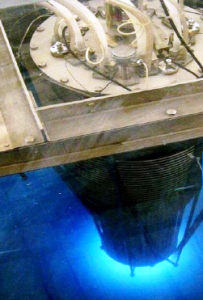
A team of Nigerian experts there, led by Professor Sunday Jonah, successfully converted it from using weapon-grade Highly Enriched Uranium (70.2%) to Low Enriched Uranium (13%) in 2018.
The Highly Enriched Uranium nuclear fuel was sent back to the manufacturers in China, thereby closing the inventory.
It was replaced with Low Enriched Uranium, which is not of nuclear-grade, also from China.
The government of USA paid for the entire exercise as part of its efforts to reduce global threats from possible nuclear terrorism.
Ambassador Bonnie Jenkins, Co-ordinator for Threat Reduction Programmes, US Department of State, stakeholders say, did an excellent job to pull that through.
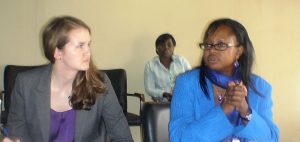
Ambassador Jenklns (right) in NNRA
She visited all the stakeholders involved, including Nigerian Nuclear Regulatory Authority headquarters, Abuja, in August, 2011 and offered training sessions for NNRA staff to enable it regulate the conversion exercise.
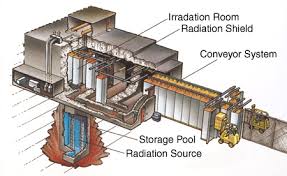
The 20-tonne-capacity Gamma Irradiation Facility in Sheda, near Abuja, which was commissioned in 2006, uses 340 kilocurie radioactive Cobalt-60 isotope and emits Gamma rays.
It is used mainly in irradiating foods to extend their shelf life by killing micro-organisms in them and also dis-infests them of insects and mould. It is also useful in delaying sprouting like in yams, potatoes, onions, when they are irradiated. It can also sterilize medical equipment.
There are two other smaller Cobalt-60 machines in Nigeria for similar functions (by 2021).
Nigeria also has a 1.7 meV (mega electron volt) Tandem Accelerator in the Centre for Energy Research and Development, CERD, in Obafemi Awolowo University, Ile-Ife, that can fire subatomic particles for research work.
It is useful in elemental analysis and is so sensitive that instead of conducting tests in Parts Per Million (PPM), it can test in Parts Per Billion.
In medicine, the Linear Accelerator, which is in the National Hospital, Abuja, and six other hospitals in Nigeria (by 2021), is useful in radiotherapy (radiation therapy).
It is used to point ionizing radiation at cancer cells to destroy them while avoiding the healthy cells.
Out of the seven, only four – in Abuja, Lagos, Ibadan and Enugu – were working by 2021.
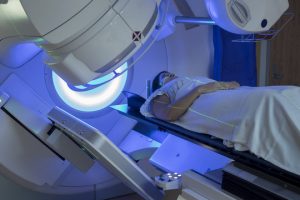
Nigeria’s nuclear regulator is the Nigerian Nuclear Regulatory Authority, NNRA, which came into being in May, 2001 created by the Nuclear Safety and Radiation Protection Act (Act 19) of 1995.
The pioneer Director-General is Professor Shamsideen B. Elegba.
He worked hard to ensure that operations were never below the minimum globally accepted standards and also maintained the independence of NNRA.
He boldly refused that NNRA should be placed under the Federal Ministry of Science and Technology because its agencies are under his regulatory control.
Professor Elegba also embarked on aggressive capacity-building.
One of those who benefited was Mr Martin Ogharandukun, who joined from the Energy Commission of Nigeria, but, instead of pursuing a specialisation course in nuclear safety, went into Solid State Physics in University of Abuja, Nigeria.
As required by the rules, on completion of his second term, Professor Elegba handed over to the most senior director, Bulus Yabaya, Director of Administration and Finance, as Acting Director-General in April, 2011.
After eating and drinking in the night of 27 May, 2011 in an official NNRA dinner, Mr Yabaya was sick and was pronounced dead from food poisoning, same night, in National Hospital, Abuja.
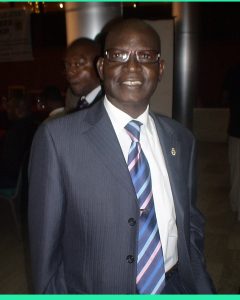
There was fear and tension in NNRA as Mr Yabaya’s family came to protest his death.
In this confusion, Martin Ogharandukun, as some observers say, usurped the office of Acting Director-General from 31 May, 2011, claiming to be the most senior director after Mr Bulus Yabaya.
No one handed over to him and he was never appointed by the President of Nigeria as required by Part 111, 8 (1) of the NNRA Act.
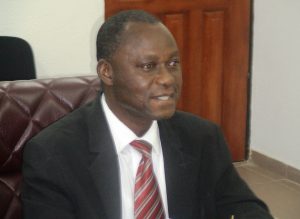
Martin Ogharandukun
He proceeded to change the signatories to NNRA’s accounts to include his name and started collecting allowance as an Acting DG/CEO from government/NNRA funds.
He posted on NNRA’s website (www.nnra.gov.ng) that the management of NNRA has appointed him the Acting DG/CEO pending the appointment of a substantive DG and went ahead to change the authority’s letter-headed papers to reflect his new “appointment”.
He carried out the full functions and duties of an Acting DG/CEO of the Authority; awarding contracts and approving payments as in the contract work in NNRA Zonal Office in Port Harcourt for 55 million naira.
The conditions for acting appointment are in Section 6 of the Public Service Rules, PSR, and clearly spelt out in Rules 020601, 020602, 020603, 020605 and 020606.
Under these Rules, the Federal Civil Service Commission must be notified and the appointment approved and gazetted by it, with the dates of commencement and cessation of the acting appointment clearly stated.
These conditions were not followed.
Similarly, a Deputy Director, Mr Akim Bakreen, made himself the Acting Director of Administration and Finance of NNRA, also without following the PSR.
Since June, 2011 he included his name as a signatory to NNRA accounts and received the allowance of an Acting Director.
Furthermore, under the NNRA Act, directors are to be appointed (not promoted).
Without an appointment letter and without even taking a promotion examination, Akim Bakreen went on to claim he has been promoted and occupied the office of Director of Administration and Finance of NNRA.

Akim Bakreen
He started performing the functions and collecting the full emolument.
From there, without resigning his appointment with NNRA, Akim Bakreen went into partisan politics; contesting in the shadow elections for PDP Lagos Central Senatorial district and lost.
He continued as Director of Administration and Finance, NNRA.
That shadow election was to produce a senatorial candidate for the party in the 2015 general election which was finally won by Senator Oluremi Tinubu of APC.
Had Akim Bakreen won the shadow election to represent the PDP, political observers felt he had no chance against Senator Oluremi Tinubu whose husband, Bola Ahmed Tinubu, a two-time governor of Lagos State, won Nigeria’s Presidential election in 2023 in APC party.
Akim Bakreen worked closely with Martin Ogharandokun. He claimed to have studied, up to a Masters’ degree, in an American university that has closed so, his qualifications could not be verified.
Meanwhile, Martin Ogharandukun hiked the licensing fee for ionizing radiation equipment in Nigeria to a minimum of two million naira for X-ray machines; four million naira for CT scanning machines and much higher for heavier machines.
Most users could not afford to pay and were threatened with close down (see Vanguard newspaper of 9 October, 2012: “Radioactive material users, NNRA on warpath over charges”).
Most healthcare providers, like the University College Hospital, UCH, Ibadan, and National Hospital, Abuja, were unable to pay and renew their licences.
On March 27, 2014 the Punch newspaper published an investigative report on UCH entitled: “Afflicted with cancer, denied treatment.”
This had serious implications for the healthcare system leading to a national outcry.
Experts who spoke out include the Chairman, Faculty of Radiology, National Postgraduate Medical College of Nigeria, Professor Abiodun Adeyinka, and Chief Consultant Radiologist, National Hospital, Abuja, Dr Olubunmi Olatunji (see Daily Trust newspaper of 17 August, 2015: “Reduce Fees To Save Lives, Radiologists Urge NNRA”).
The President of Nigerian Senate that time, Senator David Mark, intervened and ordered Martin Ogharandukun to revert to the old fee of 250,000 naira.
Stakeholders in the industry started making a case for the appointment of a qualified professional in nuclear safety and radiation protection soon as Chief Executive of NNRA.
Some of them received death threats. One of them, a vocal university professor, was abducted by unknown persons.
The Nuclear Safety and Radiation Protection Act 1995, Part 111, 8 (2) states: “The Director-General (of NNRA) shall be a person of proven integrity and shall have such qualifications and practical experience in the application of nuclear energy and ionizing radiation in science and technology, nuclear safety and radiation process.”
A lawyer in a human rights and accountability group, HURAIN, went to a Federal High Court, Abuja, seeking that Martin Ogharandukun be compelled, under the Freedom of Information Act, to name the authority that appointed him Acting Director-General.
The lawyer pulled out of the case, citing several threats.
If threats were made, it was not really known who made them.
It took three years until President Goodluck Jonathan sacked Martin Ogharandukun (April 30, 2014 Punch newspaper) and appointed Professor Dim Lawrence Anikwe, a Christian from Anambra State, southeast Nigeria, as Chief Executive.
As a result, an important institution like the NNRA, was left without a substantive Director-General for that long.
Even under the Public Service Rule 020604, an acting appointment should not exceed six months but, may be renewed for a maximum of another six months.
Meanwhile, Martin Ogharandukun had written relevant government agencies and clients of NNRA asking them not to recognise Professor Anikwe’s appointment, made by President Jonathan, as not being properly made.
With that, the handing-over formalities were delayed by a few months before Martin Ogharandukun was pushed out of NNRA.
Then, after one five-year tenure, Professor Anikwe’s appointment was not renewed by President Muhammadu Buhari.
Professor Anikwe handed over to Mr Isa Sambo who, incidentally, was not the most senior and was directed to hand over to Dr Yau Idris, a young director; Moslem from Kaduna State, northwest Nigeria, as Acting Director-General.
Dr Yau Idris rose through the ranks rapidly in NNRA: from Chief Regulatory Officer, by-passing Assistant Director, to Deputy Director and Director, all under three years.
PSR requires an officer to spend at least four years as Deputy Director before becoming a Director. For the other management levels, it is three years.
His acting appointment was confirmed on schedule with effect from 19 February, 2020 by President Buhari and he became substantive Director-General of NNRA.

The opinion of stakeholders, who still missed Professor Elegba’s momentum, however, is that the nuclear industry is not run like the civil service.
None of these men who were appointed, handed over to, nor the so-called usurper, Martin Ogharandukun, they feel, can fit into the big shoes of Professor Elegba.
Martin Ogharandukun stopped three members of staff who won foreign scholarships from studying and even sacked them.
He illegally, terminated the appointment of the Chief Information Officer in NNRA for not including him in a popular two-and-half hour live programme, Tuesday Live, on national television.
The Chief Executive of a sister agency, Nigeria Atomic Energy Commission, NAEC, Professor Erepamo Osaisai, was in it and spoke eloquently on the state of the nuclear industry in Nigeria and the way forward.
Professor Elegba had appeared twice before in that programme.
Martin Ogharandukun had NNRA pay the sponsorship fee of one and half million naira to appear also on Tuesday Live.
The live programme, for the first time, failed as he wanted to be the sole participant and got into a heated argument with the famous anchor, Cyril Stober, just before air time.
Nigerian Television Authority, NTA, as national television, has an in-house policy of balancing federal character and gender in national programmes.
He wrote NTA asking for a refund but was told the programme failed due to his fault and therefore, deserves no refund and was not getting one.
The only two professors left in NNRA were frustrated out, one after the other, by NNRA management.
One of them received several calls from a man, with hidden identity and telephone number, saying he has been hired to kill him if he does not leave NNRA.
The professor adopted a conciliatory approach in all their telephone “chats.”
The anonymous caller then said he is delaying the execution order and giving him more time to leave because “you’re too innocent a blood to be shed.”
Professor Elegba’s capacity-building exercise suffered irretrievable setback.
The Federal Government of Nigeria, with the support of the International Atomic Energy Agency, IAEA, is pursuing a nuclear electricity programme.
The lead agency is the Nigeria Atomic Energy Commission, NAEC.
The local approving agency is the Nigerian Nuclear Regulatory Authority, NNRA.
The Nigerian Minister of Science and Technology that time, Dr Ogbonnaya Onu, in an interview with the News Agency of Nigeria, NAN, on 21 October, 2006 said Nigeria is working with the Russian State Nuclear Corporation, Rosatom, towards achieving that nuclear electricity goal.

Again, while declaring open the Nigeria Energy Calculator 2050 Stakeholders’ Engagement in Abuja on 22 April, 2021 he defended the decision, saying nuclear energy will stabilise power supply in the country.
The implementation of that nuclear electricity programme was started by Professor Erepamo Franklin Osaisai as Chief Executive of NAEC.
He emerged the best overall graduating student from the University of Port Harcourt, Nigeria, and holds Master’s and doctorate degrees in Nuclear Engineering from the prestigious University of California, Berkeley, USA.
He felt that the nuclear electricity option will diversify the energy mix for Nigeria as some oil-rich countries like United Arab Emirates, Saudi Arabia, Venezuela, Libya, Russia etc are doing.
By 2008, the IAEA declared that Professor Osaisai’s NAEC has passed the first of the three phases in capacity to run a Nuclear Power Plant for electricity generation.
Electricity supply is a big issue in Nigeria.
Total output is about 5,000 mw from total grid capacity of about 10,000 mw for 200 million people.
South Africa, less than half Nigeria’s population, has 1,900 mw nuclear electricity from two reactors, and produces a total of 40,000 mw; US: 900,000 mw.
A World Bank report in 2021 indicates that 78% of electricity consumers in Nigeria get less than 12 hours of electric power every day.
The Nigerian Electricity Regulatory Commission however, puts the figure at 55%.
NAEC has identified two candidate sites out of five initial sites.
The problem, industry watchers say, is that NNRA does not have the capacity to authorize and licence a Nuclear Power Plant, starting with siting.
It took the clout of Professor Elegba, who worked closely with the IAEA, to licence the nuclear reactor in Zaria and the Gamma Irradiation Facility in Sheda Science and Technology Complex, near Abuja.
The 1,000 mw Nuclear Power Plant, as is being proposed, is a bigger issue.
Another challenge is that some of the small operators of ionizing radiation-emitting sources, reportedly, do not appreciate the need to be strictly regulated.
 Dr Yau Usman Idris, Director-General, NNRA
Dr Yau Usman Idris, Director-General, NNRA
Furthermore, the idea of full independence of the nuclear regulator in Nigeria is sometimes questionable when NNRA uses the facilities of the operators it is regulating.
The big oil companies offer their guest houses and use their helicopters and speed boats to take NNRA regulators on offshore inspections of their facilities.
It is like a judge taking a lift to court (and back) from a litigant to hear his case because there is no official car!
Another challenge is the lack of a comprehensive inventory of sources and users which is a necessary condition for an effective regulatory control of ionizing radiation-emitting sources in the country because it will enhance safety and security.
This was started by Professor Elegba and, needless to say, it got moribund after him.
Small operators using ionizing radiation sources in Nigeria are many, diverse and scattered and bringing all of them under full regulatory control at all times is a difficult and daunting task.
All these challenges are of serious concern because the use of ionizing radiation, if not properly supervised, poses great and long-lasting danger.
The NNRA as Nigeria’s nuclear regulator, therefore, needs the support of all as it works to protect lives and the environment from the harmful effects of ionizing radiation.
photo credit: nta, herald

